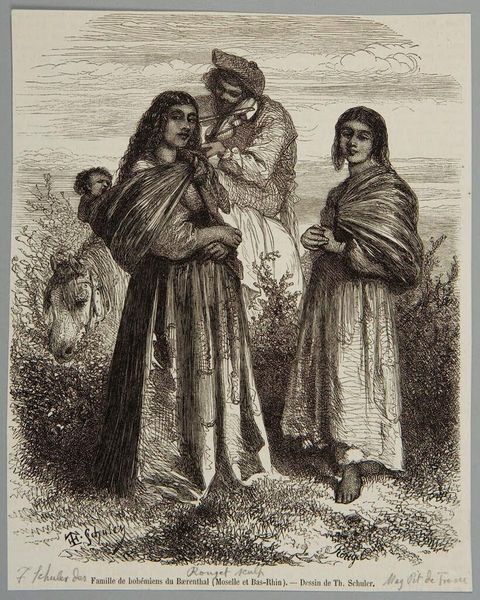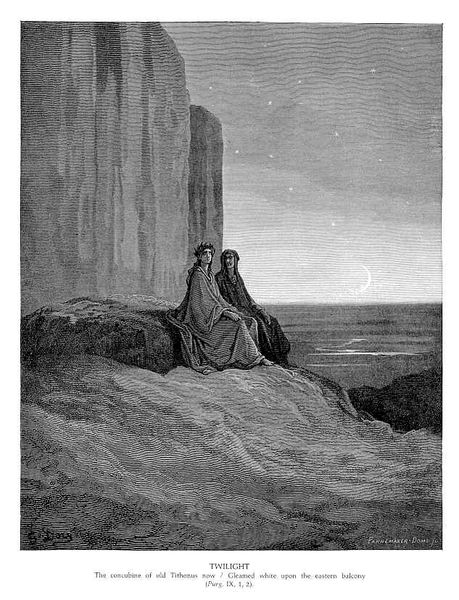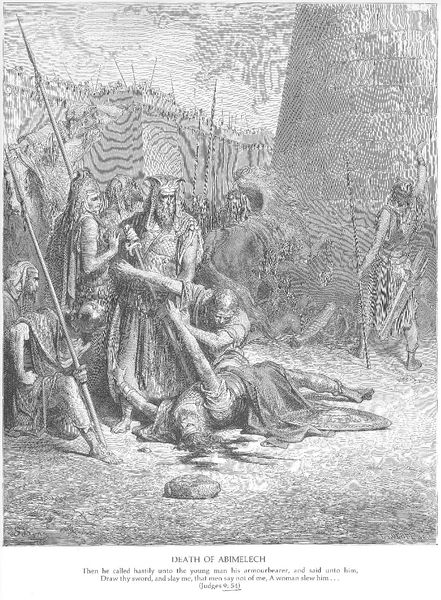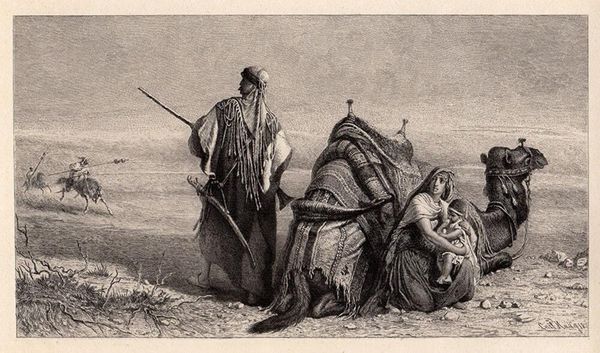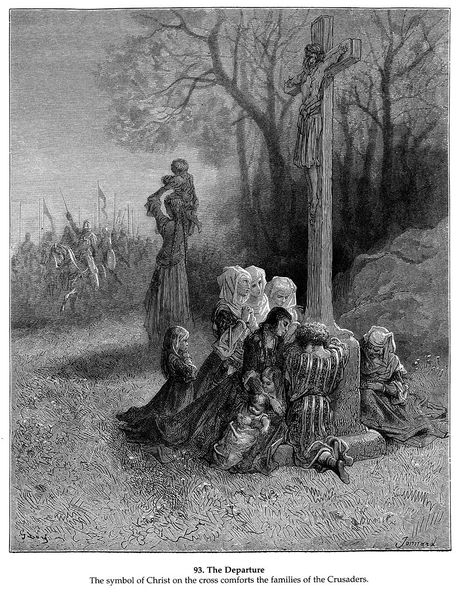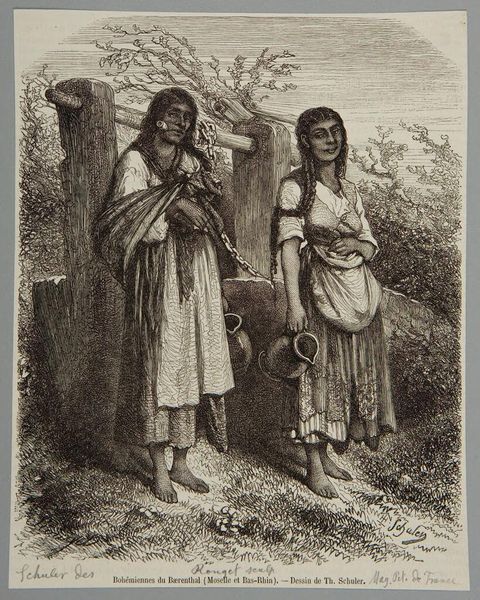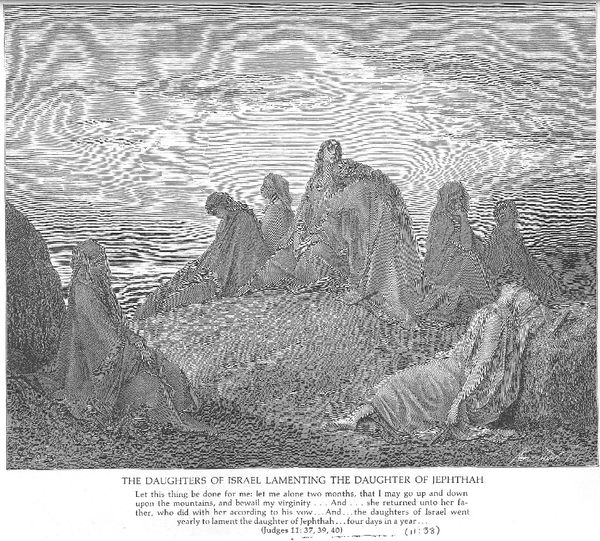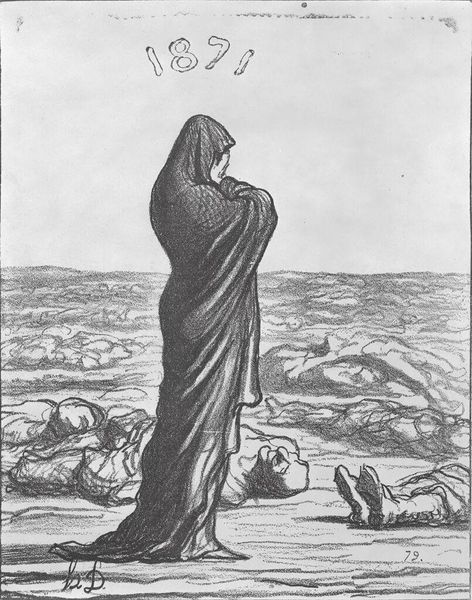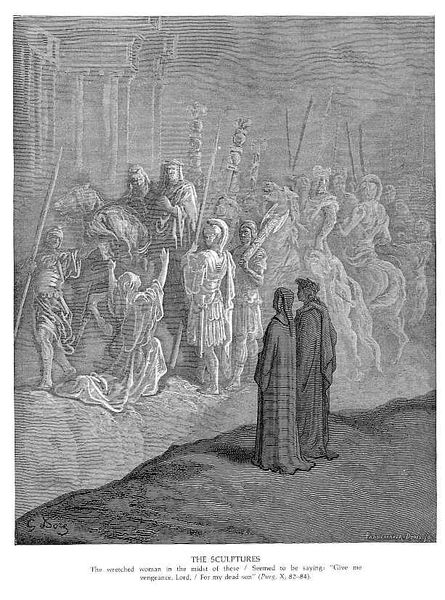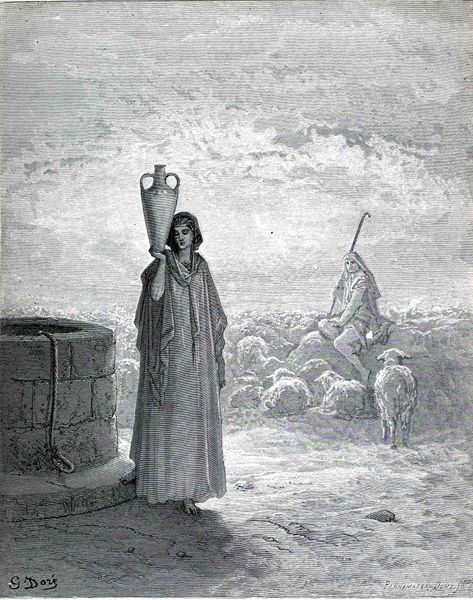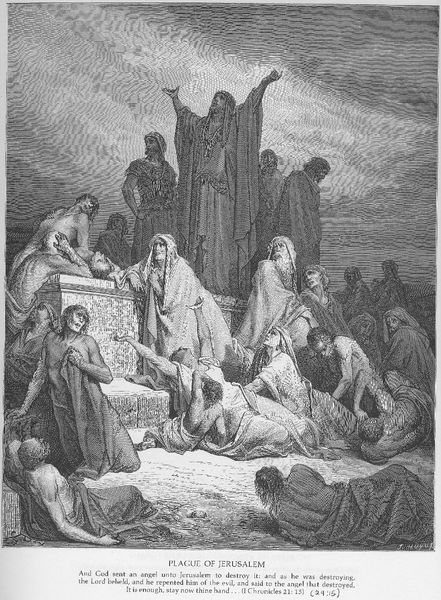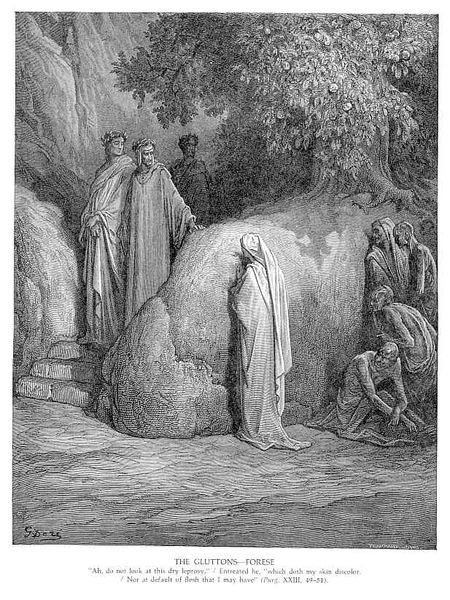
drawing, paper, ink
#
drawing
#
narrative-art
#
paper
#
ink
#
pencil drawing
#
romanticism
#
christianity
#
history-painting
Copyright: Public domain
Editor: So, this is "Expulsion of Ishmael and His Mother" by Gustave Dore, done in ink on paper. There's something deeply unsettling about the scene. It feels both intimate and incredibly lonely. What do you see in this piece? Curator: I see a visual articulation of power, specifically patriarchal power, at play within a biblical narrative. Consider the historical context: Dore was creating this during a period of intense social upheaval and shifting power dynamics in Europe. This piece reflects the era’s anxiety surrounding issues of legitimacy, inheritance, and the roles assigned to different groups, wouldn't you agree? Editor: Absolutely, the figure gesturing, ostensibly expelling Hagar and Ishmael, holds such authority. The other figure is shrouded by robes as well, as though concealing emotions behind the fabric of their attire. Are we meant to see this as a reflection of something larger? Curator: Precisely! Think about the romanticism movement Dore was a part of, focusing on dramatic narratives, intense emotions, and a longing for an idealized past. Dore used these elements to highlight what happens at the intersections of gender, race, and religion in this depiction of Hagar and Ishmael's expulsion. Who gets to decide who belongs and who doesn't, and what historical power structures enable these decisions? Editor: That makes so much sense. So, it’s not just a historical scene; it’s a commentary on the ways societies create and reinforce hierarchies. Is there anything in particular you notice about Hagar? Curator: Her posture, carrying the water jug on her head while leading her child, symbolizes the burdens placed upon marginalized bodies. In addition, there's a deep intersection between this image and migration or forced displacement, echoing contemporary dialogues. Editor: I hadn’t thought about the weight of the jug in that way. It reframes my understanding of the whole drawing. Curator: Exactly. Art offers these reflections across time, it allows us to recognize injustices in the past and see how they continue in new forms today. It's always relevant to ask, how do these historical representations affect how we view and treat marginalized communities? Editor: Thanks so much. I think this lens is going to give me a much richer appreciation of the drawing, as well as other work in this style!
Comments
No comments
Be the first to comment and join the conversation on the ultimate creative platform.


